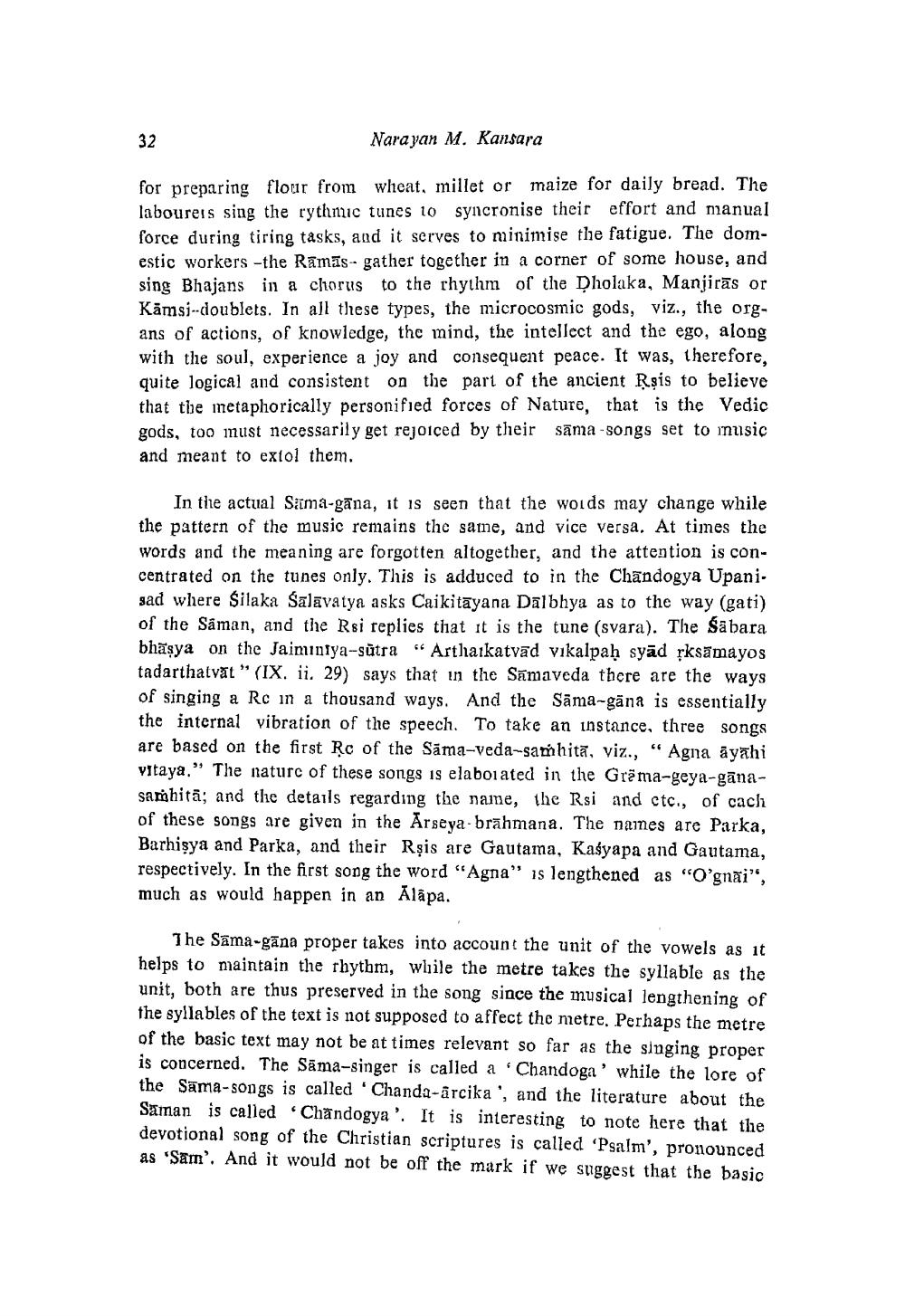________________
Narayan M. Kansara
for preparing flour from wheat, millet or maize for daily bread. The labourers sing the rythmic tunes 10 syncronise their effort and manual force during tiring tasks, and it serves to minimise the fatigue. The domestic workers -the Rāmās- gather together in a corner of some house, and sing Bhajans in a chorus to the rhythm of the Dholaka, Manjirās or Kämsi-doublets. In all these types, the microcosmic gods, viz., the organs of actions, of knowledge, the mind, the intellect and the ego, along with the soul, experience a joy and consequent peace. It was, therefore, quite logical and consistent on the part of the ancient Rşis to believe that the metaphorically personified forces of Nature, that is the Vedic gods, too inust necessarily get rejoiced by their sama-songs set to music and meant to extol them.
In the actual Sama-gāna, it is seen that the words may change while the pattern of the music remains the same, and vice versa. At times the words and the meaning are forgotten altogether, and the attention is concentrated on the tunes only. This is adduced to in the Chandogya Upani. sad where Silaka Salavatya asks Caikitāyana Dalbhya as to the way (gati) of the Saman, and the Rsi replies that it is the tune (svara). The Sabara bhāsya on the Jaiminiya-sutra " Arthaikatvad vikalpaḥ syād sksāmayos tadarthatvat” (IX. ii. 29) says that in the Sāmaveda there are the ways of singing a Rc in a thousand ways. And the Sāma-gana is essentially the internal vibration of the speech. To take an instance, three songs are based on the first Rc of the Sāma-veda-samhitā, viz., “Agna āyahi vitaya.” The nature of these songs is elaboi ated in the Grēma-geya-gānasamhita; and the details regarding the name, the Rsi and ctc., of cach of these songs are given in the Arseya-brahmana. The names are Parka, Barhisya and Parka, and their Rşis are Gautama, Kaśyapa and Gautama, respectively. In the first song the word "Agna" is lengthened as "O'gnai”, much as would happen in an Aläpa.
The Sama-gāna proper takes into account the unit of the vowels as it helps to maintain the rhythm, while the metre takes the syllable as the unit, both are thus preserved in the song since the musical lengthening of the syllables of the text is not supposed to affect the metre. Perhaps the metre of the basic text may not be at times relevant so far as the singing proper is concerned. The Sama-singer is called a Chandoga' while the lore of the Sama-songs is called 'Chanda-arcika', and the literature about the Saman is called Chandogya'. It is interesting to note here that the devotional song of the Christian scriptures is called 'Psalm', pronounced as 'Sam'. And it would not be off the mark if we suggest that the basic




